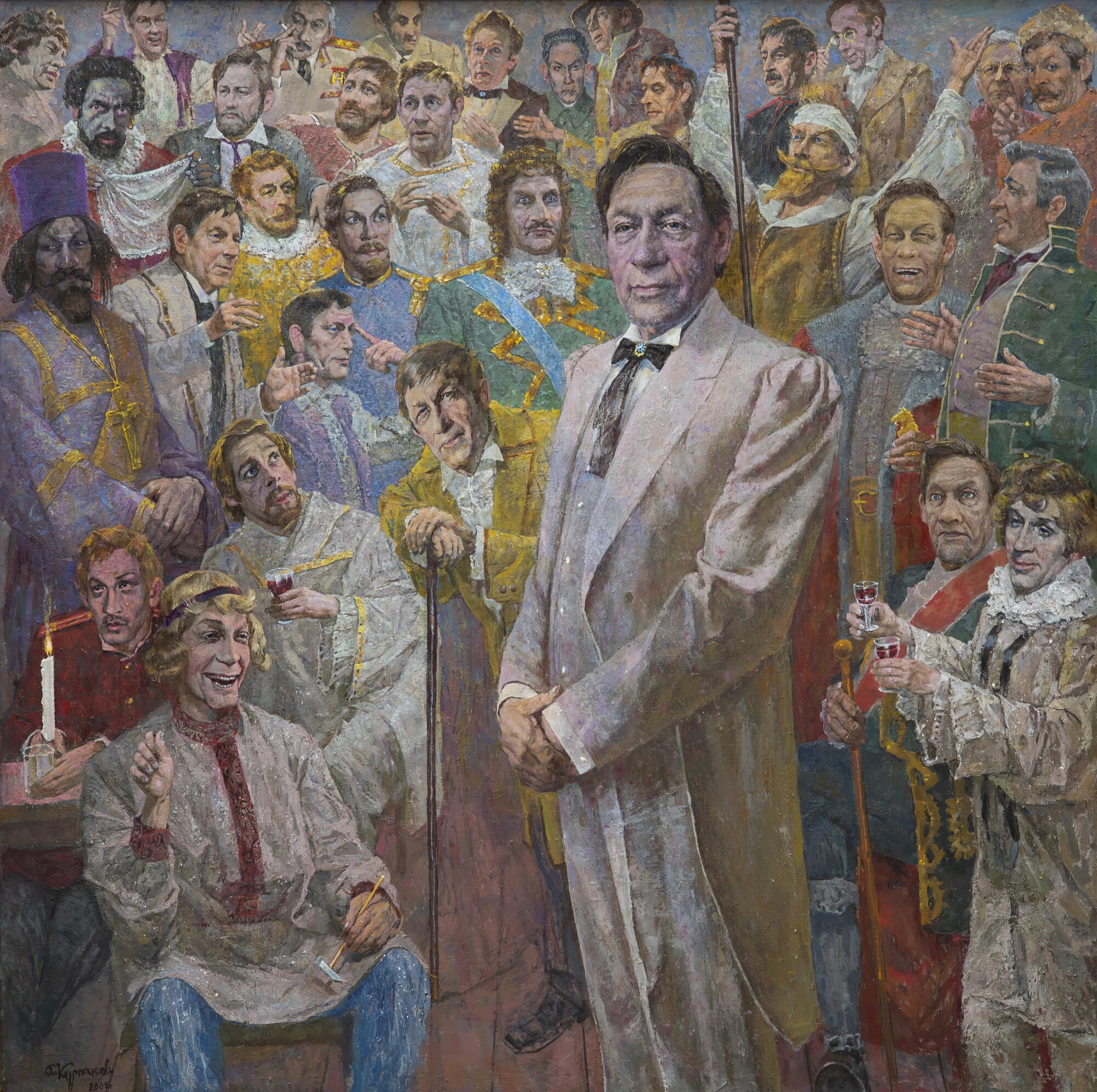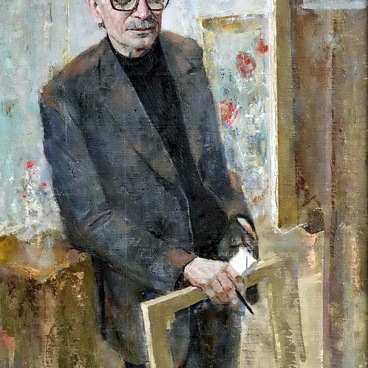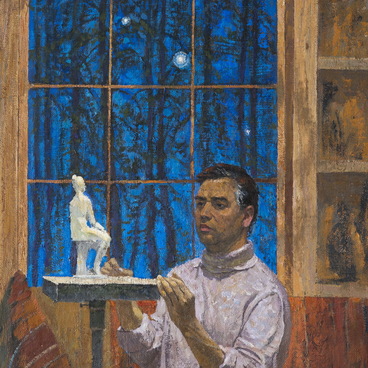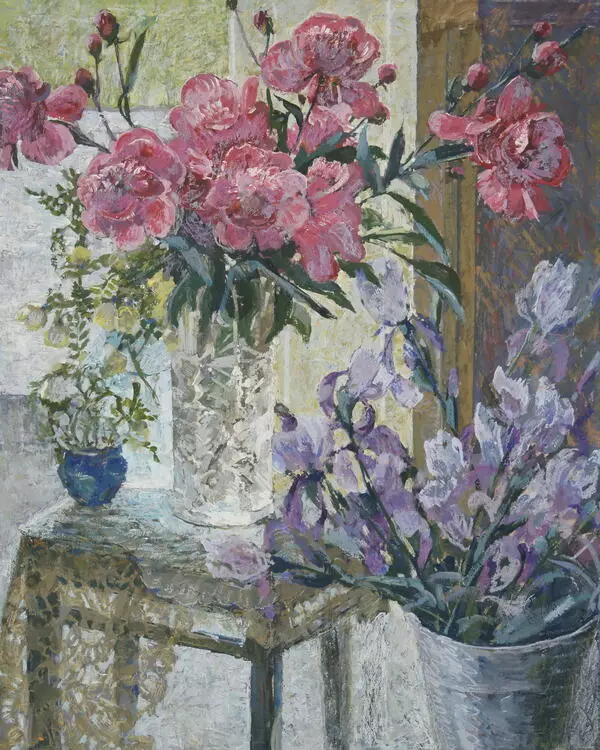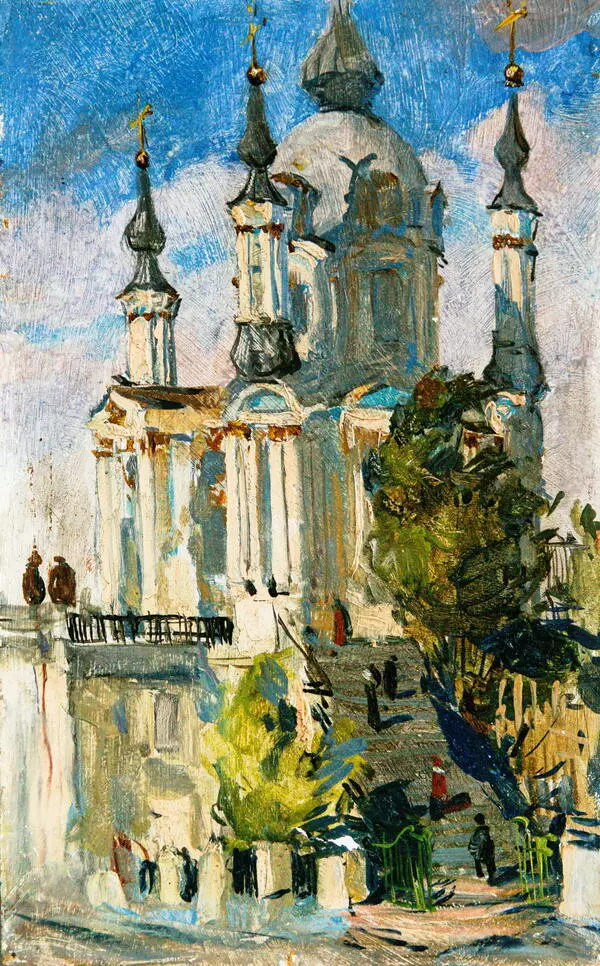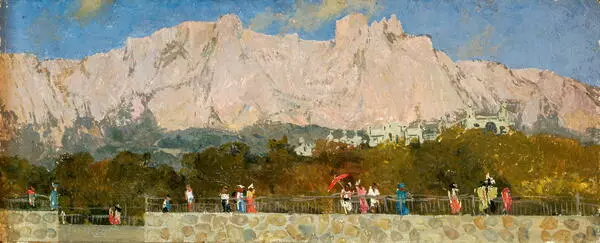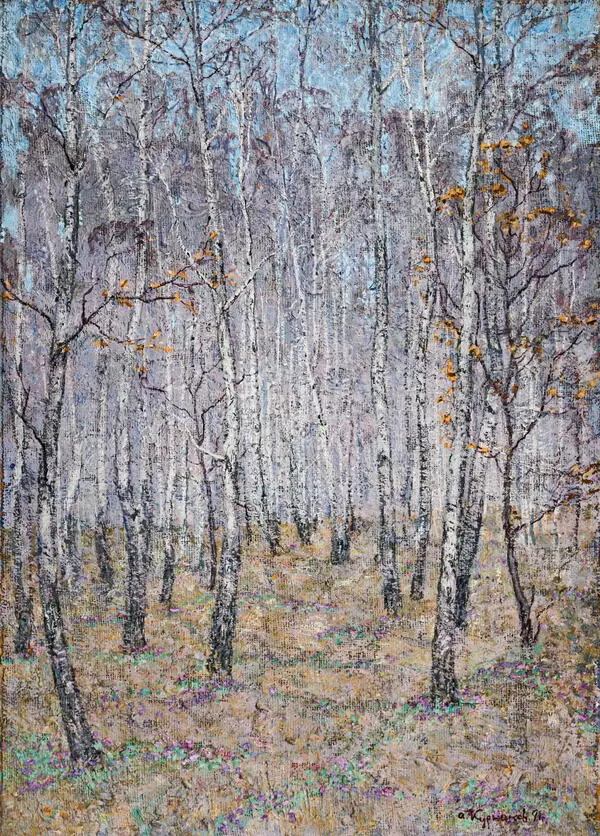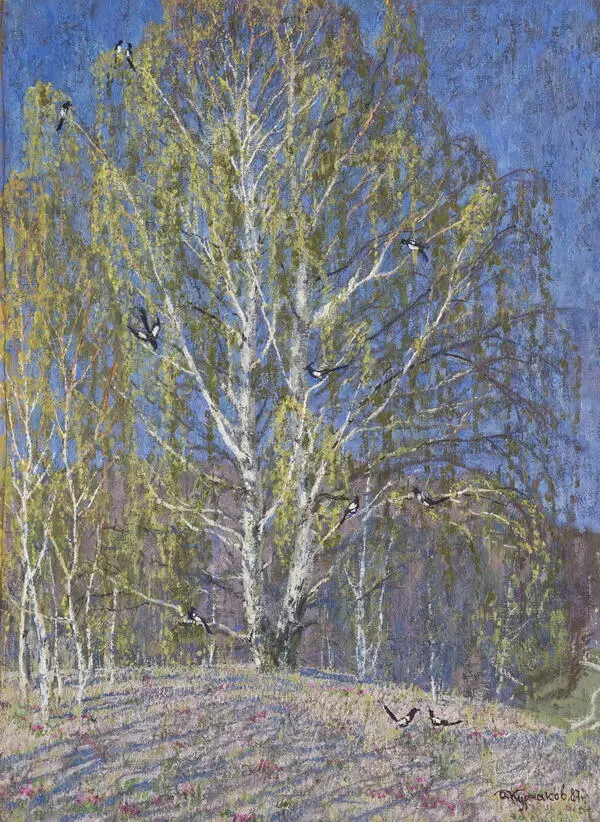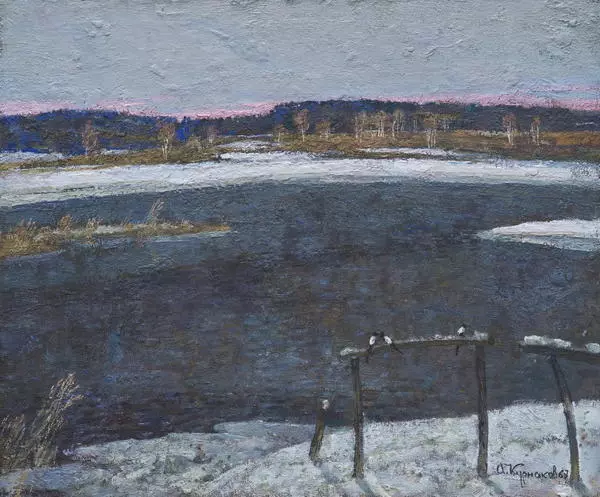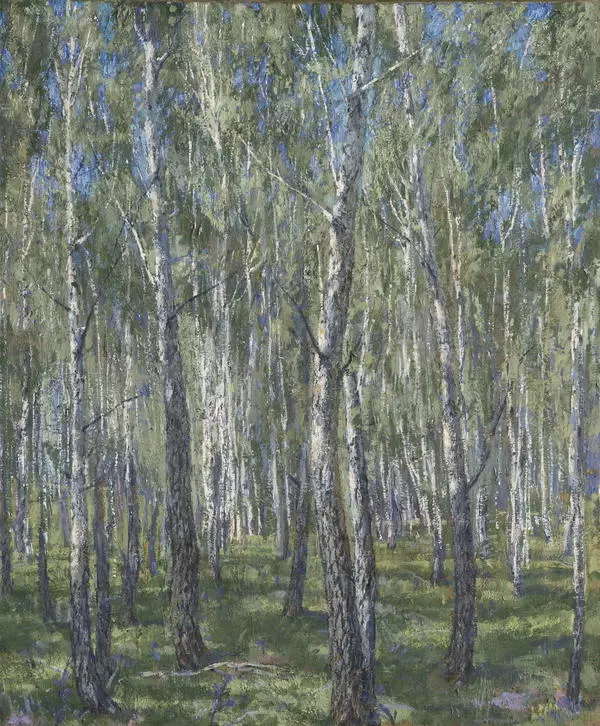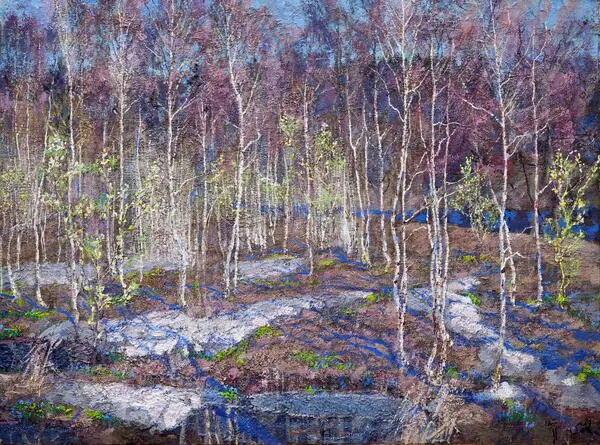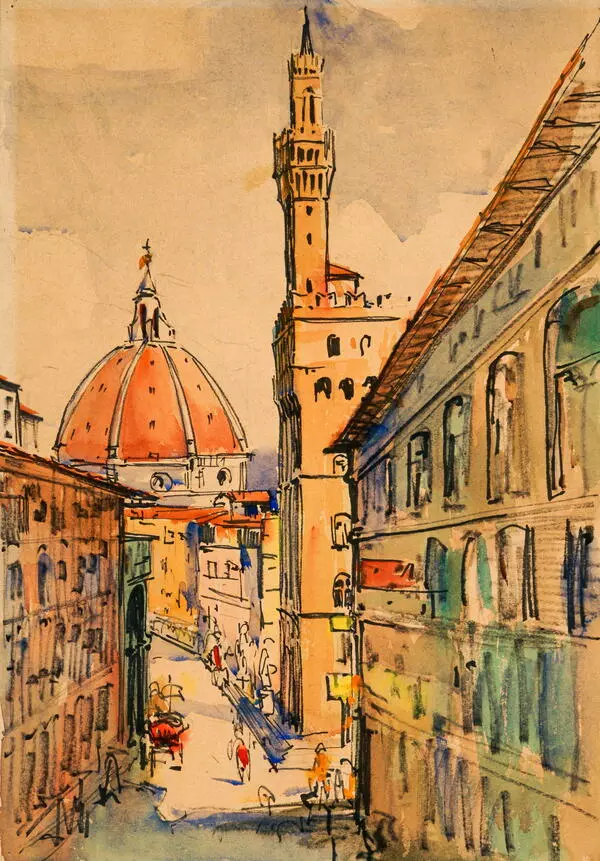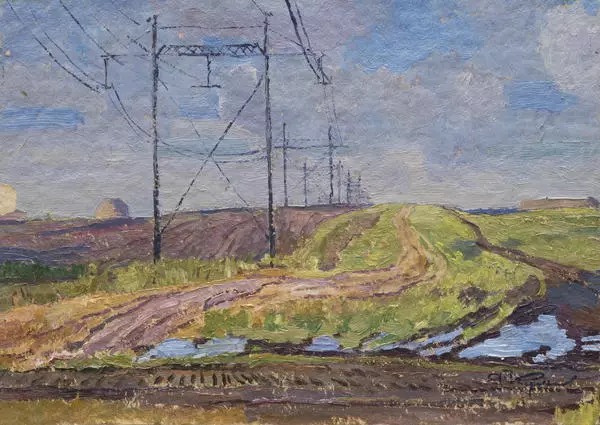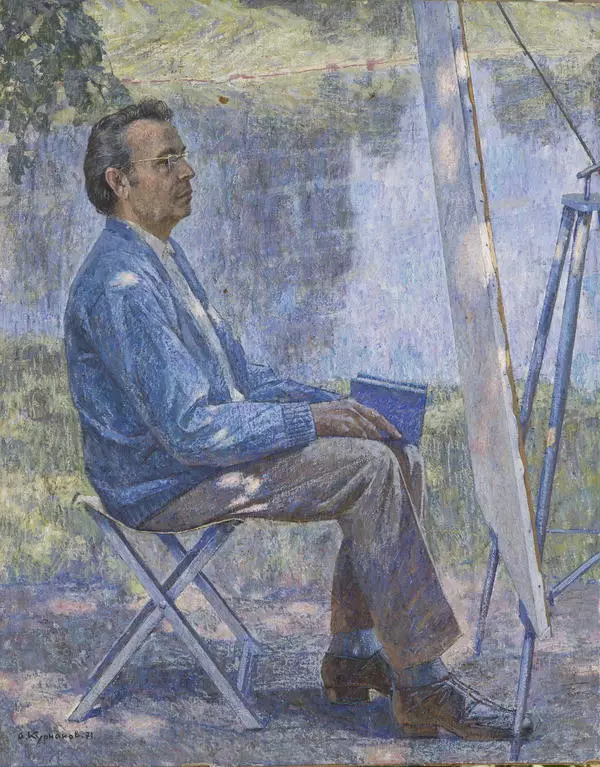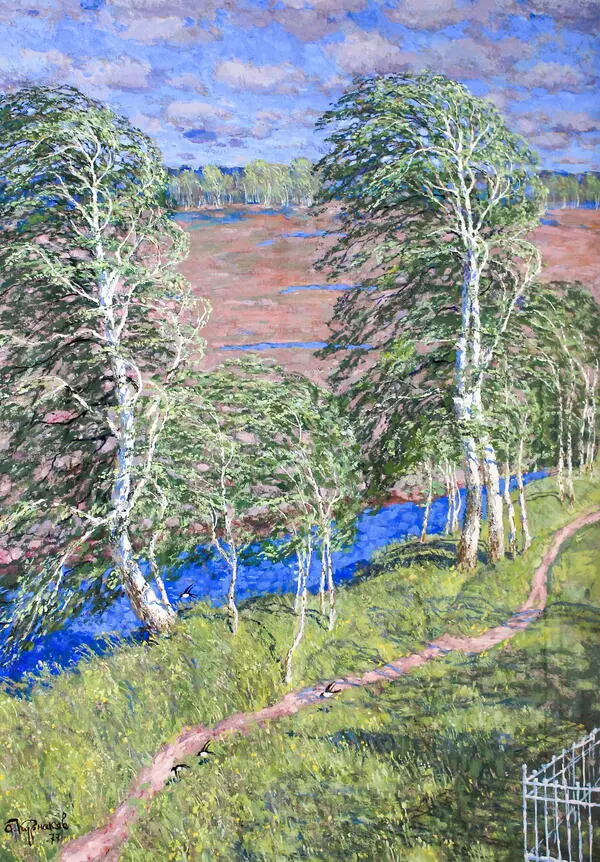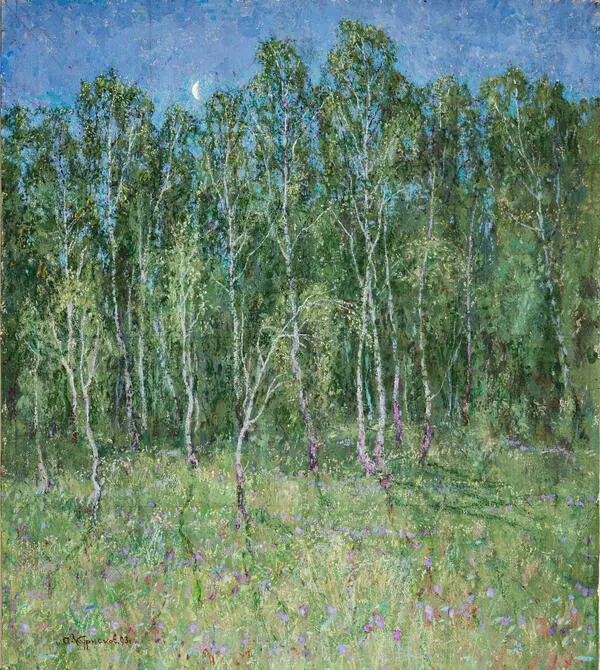According to Andrei Ilyich Kurnakov, before painting the portrait, for some time he needed to ‘fall in love’ with his hero. This happened with the portrait of Pyotr Sergeevich Vorobyov, the leading actor of the Oryol State Academic Theater named after I.S. Turgenev, People’s Artist of Russia. When the artist first saw the actor on stage, he liked his extraordinary, interesting, impressive performance. Pyotr Sergeevich was not only a wonderful theaterl artist, but also played the guitar, sang songs by Bulat Okudzhava, read the works of Vladimir Mayakovsky, Mikhail Zoshchenko, Mikhail Zhvanetsky, loved the stories of Anton Pavlovich Chekhov, did not miss a single creative evening and was always in the spotlight.
All this sides Andrei Ilyich wanted to capture in his work. But he had to come up with something interesting, unusual, memorable. The artist invited an actor for the first sketches, and they spent the whole day in the studio. Pyotr Sergeevich talked about the theater, his creative path, his roles. But the decisive words in the concept of the portrait were the actor’s words: ‘All roles are ghosts that visit you day and night. They float into memory, like relatives, and are always near. They warm the soul, and you understand that you have chosen the right profession.’
A month later, Andrei Ilyich showed the first sketches with a new unusual idea - the actor and his roles. Pyotr Vorobyov was delighted with the idea of painting such a portrait, and the work began. During the long evenings, Pyotr Sergeevich talked about the roles, about how he got on the stage, became interested in acting, sought artistry, what worked out, and what he would like to do better.
Andrey Kurnakov called his work ‘The Mummer. Portrait of the Actor P.S. Vorobyov “, thereby expressing the essence of the acting profession, which, in his opinion, is the ability to create an image of another person, express his emotions, show character, and thereby influence the viewer, forcing him to reconsider his life and look at the surrounding reality differently
The artist established the goal of painting not just a portrait, but the life of an actor, and for this he placed him among the roles he played. But the actor himself does not merge with his characters, on the contrary, he stands in the foreground, leaving behind a mosaic of faces. The artist seems to be taking a bow. He is dressed in a light, festive tailcoat with a vest, a black satin bow with a brooch is tied on a white shirt.
All the heroes live in the picture: drink, talk, laugh. Proud Othello, in which love and jealousy fight; the nihilist Bazarov, who denies art and love, but is ardent and suffering; Tsar Peter the First - a reformer hungry for action; the dreamy Don Quixote, wandering in the world of knights and beautiful ladies; a Lefty who embodies the main features of the Russian person.
The compositional center of the picture is the actor”s eyes. They have wisdom of a person reflecting on the events of the past and present and foreseeing the future.
All this sides Andrei Ilyich wanted to capture in his work. But he had to come up with something interesting, unusual, memorable. The artist invited an actor for the first sketches, and they spent the whole day in the studio. Pyotr Sergeevich talked about the theater, his creative path, his roles. But the decisive words in the concept of the portrait were the actor’s words: ‘All roles are ghosts that visit you day and night. They float into memory, like relatives, and are always near. They warm the soul, and you understand that you have chosen the right profession.’
A month later, Andrei Ilyich showed the first sketches with a new unusual idea - the actor and his roles. Pyotr Vorobyov was delighted with the idea of painting such a portrait, and the work began. During the long evenings, Pyotr Sergeevich talked about the roles, about how he got on the stage, became interested in acting, sought artistry, what worked out, and what he would like to do better.
Andrey Kurnakov called his work ‘The Mummer. Portrait of the Actor P.S. Vorobyov “, thereby expressing the essence of the acting profession, which, in his opinion, is the ability to create an image of another person, express his emotions, show character, and thereby influence the viewer, forcing him to reconsider his life and look at the surrounding reality differently
The artist established the goal of painting not just a portrait, but the life of an actor, and for this he placed him among the roles he played. But the actor himself does not merge with his characters, on the contrary, he stands in the foreground, leaving behind a mosaic of faces. The artist seems to be taking a bow. He is dressed in a light, festive tailcoat with a vest, a black satin bow with a brooch is tied on a white shirt.
All the heroes live in the picture: drink, talk, laugh. Proud Othello, in which love and jealousy fight; the nihilist Bazarov, who denies art and love, but is ardent and suffering; Tsar Peter the First - a reformer hungry for action; the dreamy Don Quixote, wandering in the world of knights and beautiful ladies; a Lefty who embodies the main features of the Russian person.
The compositional center of the picture is the actor”s eyes. They have wisdom of a person reflecting on the events of the past and present and foreseeing the future.
